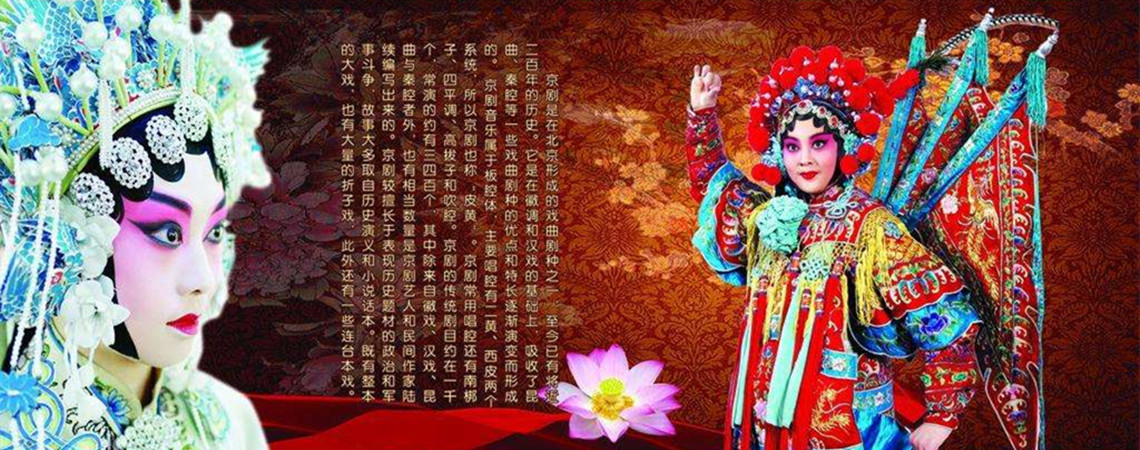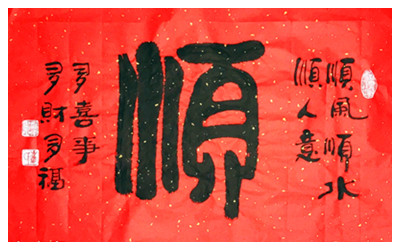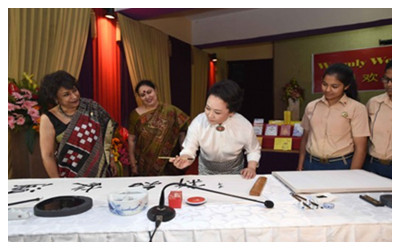Skype: neodalle-travel
Tel: +86 135 7447 2266
E-mail: sales@visitaroundchina.com

 As the quintessence of Chinese culture, Chinese calligraphy (中国书法) is an ancient writing art of Chinese characters evolving from oracle bone inscriptions, Shi Guwen (inscriptions on drum-shaped stone blocks) and Jin Wen (inscriptions on ancient bronze objects) to regular script, cursive script and running script. Originally, Chinese character was used to record something or express what people wanted to say. In writing, people tried to make the scripts look beautiful and elegant. Out of some special need, they were written in artistic styles.
As the quintessence of Chinese culture, Chinese calligraphy (中国书法) is an ancient writing art of Chinese characters evolving from oracle bone inscriptions, Shi Guwen (inscriptions on drum-shaped stone blocks) and Jin Wen (inscriptions on ancient bronze objects) to regular script, cursive script and running script. Originally, Chinese character was used to record something or express what people wanted to say. In writing, people tried to make the scripts look beautiful and elegant. Out of some special need, they were written in artistic styles.Ancient people paid great attention to calligraphy. It was the essential whereby a candidate could manifest his literary talent in the Imperial Examination, for it gave a first impression to the examiners. Children of high officials had to learn and try to write a good hand; even emperors themselves were good at calligraphy, for example, the versatile Emperor Qianlong in the Qing Dynasty (1644 – 1911) has left us many examples of his handwriting on steles in temples and palaces.
 To practise calligraphy requires the basic tools of 'four treasures of study' (writing brush, ink stick, paper, and ink slab) as well as much concentration on guiding the soft writing brush charged with fluid ink, and writing on the paper where the ink will diffuse quickly. Once the brush movement hesitates, a black mark is created, so speed, strength and agility is the essence of fine artwork. When writing, many calligraphers will forget all worries and even themselves, combining all thoughts in the beauty of their art. Thus it can be compared with Qigong, which also can mould and improve a person's temper and promote well being.
To practise calligraphy requires the basic tools of 'four treasures of study' (writing brush, ink stick, paper, and ink slab) as well as much concentration on guiding the soft writing brush charged with fluid ink, and writing on the paper where the ink will diffuse quickly. Once the brush movement hesitates, a black mark is created, so speed, strength and agility is the essence of fine artwork. When writing, many calligraphers will forget all worries and even themselves, combining all thoughts in the beauty of their art. Thus it can be compared with Qigong, which also can mould and improve a person's temper and promote well being.
Today, although various modern ways have been substituted for the original calligraphy, especially which created with a writing brush, people still love the ancient form and practise it untiringly. During the traditional festivals, propitious couplets are always indispensable decorations each written in a beautiful style.
History of Chinese Calligraphy
Calligraphy has endured for more than 2,000 years, and evolved into five main ways of writing each with different techniques. Even today, these are still followed and practiced often as a hobby.
Just as it is an art practiced in western cultures so Chinese writing is a leading component in the four traditional arts, namely lute-playing, chess, calligraphy and painting. With the unification of the Chinese people by the Qin Dynasty (221 BC – 206 BC) the Prime Minister Li Si actively promoted a unified form of writing based on inscriptions on bronze wares of previous states. This was the first example– known as 'seal character' (Zhuanshu). Calligraphers of seal character stress a slender font, even speed and strength, and even thick lines and strokes. When seen as a whole, this is quite round and contracted.
In the Eastern Han Dynasty (25 - 220), people tended to simplify the seal character which had many strokes and created the official script. The new calligraphy appeared to be much neater and delicate, turning the round style into a flat one. When beginning to write a horizontal line, one must let the brush go against the direction of point like a silkworm, and concentrate on stretching steadily, then end up with warp like a swallow's tail. This is one of the characteristics – 'silkworm's head and swallow's tail'.
Just as the name implies, the regular script features its regularity and varies from the flat font to a square one. In Chinese it provides a model that can be followed by calligraphy lovers. It has developed since the late Han Dynasty and is today's most popular and influential writing style. The Sage of Calligraphy, Wang Xizhi led the art of calligraphy to its summit. It is recorded that when a carpenter was asked to engrave the wooden stele where there were characters written by Wang Xizhi, he found the ink had filtered into the wood piece 'three fen' deep (3.3cm or 1.3 inch)! This demonstrated the magnitude of his force and people admired him all the more because of it. The period when regular script thrived most was during the Tang Dynasty (618 – 907), when Yan Zhenqing and Liu Gongquan successively established schools of their own styles noted for their strength and mellowness.
Cursive script has more flexibility, for it only maintains the essence of each character and expresses more personal exertion. Therefore its value lies in appreciation more than practicality. While the running hand makes full use of connecting lines between two strokes it can be regarded as the quickly-written form of regular script. These two seem to be more unrestrained than the previous styles.
Five Types of Chinese Calligraphy
Roughly speaking, Chinese calligraphy could be divided into five types: seal script, clerical script, regular script, running script and cursive hand.
Seal script(篆书): Chinese character was born before Qin Dynasty. Archeologist took the research on Chinese characters and ascertained the Oracle Bones scripts used for auspicating the unexpected future. But it has possessed the basic elements of China’s calligraphy has. During the time of Yin and Zhou, the bronze inscriptions were widely popularized. After the unification of Qin Dynasty, it was called to be the small seal script as the official character style used in the normalized documents. ,and generally used in recording a merit onto the stones , Tiger Tallies, a special two-piece object granted to officers, used for military authentification or authority. For instance, when a general wants to dispatch a troop from certain, he probably has to show one piece of the tiger tally to the camp officer. The camp officer will in turn show his own piece of tiger tally and both pieces must match each other in order for command of dispatching/processing to go through. Generally speaking, seal script could be fractionized into large-size seal script and small-size seal script. The major representative was Li Si
Clerical script(隶书): clerical script was originated from Eastern Han Dynasty and one more great reform in Chinese characters and aided Chinese calligraphy came into a higher level. It was a turning point in the history of Chinese evolution and laid a solid foundation for the form and appearance of regular scripts. Its structure was flat, orderly, and delicate. The artistic beauty of calligraphy and diversity of its style are worthy of artistic appreciation. The clerical script of Han Dynasty was the most popular style of characters at that time. The strokes of clerical script own the merits of wave and fold. The wave means the strokes of left runs like the water wave and the fold means the strokes of right were open and broad ,and it also like the strokes of pressing-down of coattail. The reform from seal script to clerical script involved in strokes and frameworks. The way from seal script to clerical script was changing roundness for squareness, bendiness for straightness and altering the breakage and consistency of strokes. The most important was obtaining the effect from the horizontal strokes and preserving the natural conditions of writing in brushes. The delicacy of clerical script was also released in silk paintings, lacquerwork, figures and bronzed mirrors. The vigor and unique charm were also more easily seen in the stele inscriptions. The most typical representative was Cai Yong.
Regular Script(楷书): the regular script was evolved from the clerical script and simplified the clerical script. The grapheme was changed from flatness to squareness and also omitted the waves of strokes of clerical script in Han Dynasty. The regular script was born at the late period of Han Dynasty and always popularized up to today. The regular script began prevailing in Six Dynasties and flourished in Tang Dynasty. The masterpieces of regular script was apt to the orderliness and preciseness, from a character, complicated or simple, to a stroke were both express the cautiousness and power which indicates the calligraphers’ mildness and patience, so many a beginner learns how to write calligraphy the calligraphy teachers would suggest they started their study from regular script. In fact, generally, the regular script is also easily learned if you own much time and sense of balance and wholeness. There is a famous tradition for beginner to exercise the regular script, roughly, an experienced tutor would advice his students practicing a Chinese character “永” which in professional calligraphers’ eyes was comprised of eight different writing styles, and this would diversify the beginners horizons. There is a saying in China: a good beginning is half done. If they could take much interest to calligraphy because of this character and the ways it owns, they will be make a splendid progress in the near future. The symbol of flower of the regular script was the prevailingness of calligraphy in Northern Dynasty which showed a rustic but powerful style. Objectively the golden time of regular script was during the time of Tang Dynasty, a large number of great masters improve tremendously the regular script Ouyang Xun, Liu Gongquan, Chu Suiliang and Yan Zhenqing, and all of they had their own special understanding and writing styles. Liu Gongquan was a noted one as the prime minister of Muzong of Tang Dynasty. He once gave the emperor the suggestions that the personal cultivation just like handwriting, if your heart and attitudes are just and decent and gesture of holding brushes is right, your handwriting will be delicate and perfect, and if an emperor did everything carefully and diligently in a good way, he also would be a judicious and extensively-welcomed king. Because of this, he was reputed as the advisor of brush.
Cursive hand(草书): it is a style born for convenience of writing, it was written in the early period of Han Dynasty. And the fundamental characters are having the basic structure of characters but obliterating the preciseness and exactness of clerical script. It is full of freedom and random without any limits or regulations fettered. Because of the fast-speediness in writing without any preparations in layout and structure, so we name it the cursive hand. Generally, the cursive hand could be divided into three kinds, namely, Li Cao, Zhang Cao and Jin Cao. Li Cao popularly included some characters of cursive hand in seal script, but it broke the preciseness and regulations of clerical script. Zhang Cao was the refined cursive hand mixed with clerical script of Han Dynasty. The characters are single and separated from each other but grapheme is apt to squareness. Zhang Cao was flourished in the period of Han and Wei Dynasties and regenerated in Yuan Dynasty but retrograded in Ming Dynasty. In the late period of Han Dynasty, Zhang Cao was more cursive and gradually got rid of the tracks of strokes from clerical script. Many different strokes are combined in a continuous writing and many parts of the exact characters were predigested or simplified, then we called it Jin Cao which in Tang Dynasty was more random and free, and the changeable and floating characters interlinked with one another. Up to today, the aesthetic worthiness naturally surpasses its practical values. The cursive hand is easily and straightforwardly expressing the calligraphers ‘reactions and sentiments at the time of creating the works. The great masters include Zhang Zhi, Zhang Xu, Huai Su.
Running script(行书): the running script was born in the late period of Eastern Han Dynasty, but from the appearance, formation and to evolution in the past dynasties, it was not an independent style of calligraphy. Running script has its own style except the exact writing methods and this is the biggest difference from other styles of calligraphy. Its obvious peculiarity is non-stop stroke used for finishing a character in one stroke and some strokes could be omitted or simplified but remains the recognizable structures of the characters so as to make the readers or appreciators understand the basic content and then eventually realized the aims of easily writing and straightaway understanding. What’s more, the running script is also closely connected with other handwriting styles. The running script was born in the period of Han Dynasty, formed in Wei and Jin Dynasties, and flourished at all times till today. In the period of Eastern Jin Dynasty, Wang Xizhi and Wang Xianzhi‘s achievements in this aspect glorified the running script in their own way and via their own understanding to this style of calligraphy. And in the period of Song, Yuan, Ming, Qing Dynasties, the running script developed rapidly and dramatically, and a lot of great masters and literators spent much time in researching it on practice and theory. The chief characteristics include: firstly, the appearance of numerous calligraphers experting in running script and cursive hand and was characterized by their own peculiar individualism, hence their works are filled with high-level artistic values, humanity and personalization because of individualization. Secondly, they also focused on the combination between the running script and stele inscriptions, and the effect gained was beyond the conventional conception and comprehension. It is a further creation or innovation. The major representatives include Wang Xizhi, Su Dongpo, Mi Fu, Zhao Mengfu and Wen Zhengming etc.
 Ask Questions ?
Ask Questions ?